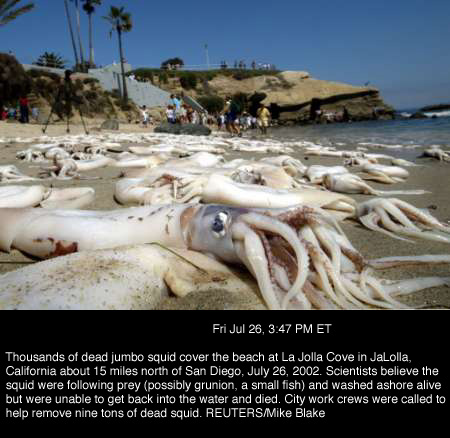
Giant Squid
The giant squid (genus: Architeuthis) is a deep-ocean dwelling squid in the family Architeuthidae, represented by as many as eight species. Giant squid can grow to a tremendous size: recent estimates put the maximum size at 13 metres (43 ft) for females and 10 metres (33 ft) for males from caudal fin to the tip of the two long tentacles (second only to the colossal squid at an estimated 14 metres (46 ft), one of the largest living organisms). The mantle is about 2 metres (6.6 ft) long (more for females, less for males), and the length of the giant squid excluding its tentacles is about 5 metres (16 ft). There have been claims reported of specimens of 20 metres (66 ft) or more, but no animals of such size have been scientifically documented.
Giant Squid
Like all squid, a giant squid has a mantle (torso), eight arms, and two longer tentacles (the longest known tentacles of any cephalopod). The arms and tentacles account for much of the squid’s great length, making giant squid much lighter than their chief predators, sperm whales. Scientifically documented specimens have masses of hundreds, rather than thousands, of kilograms.
The inside surfaces of the arms and tentacles are lined with hundreds of sub-spherical suction cups, 2 to 5 centimetres (0.79 to 2.0 in) in diameter, each mounted on a stalk. The circumference of these suckers is lined with sharp, finely serrated rings of chitin. The perforation of these teeth and the suction of the cups serve to attach the squid to its prey. It is common to find circular scars from the suckers on or close to the head of sperm whales that have attacked giant squid. Each arm and tentacle is divided into three regions — carpus (“wrist”), manus (“hand”) and dactylus (“finger”). The carpus has a dense cluster of cups, in six or seven irregular, transverse rows. The manus is broader, close to the end of the arm, and has enlarged suckers in two medial rows. The dactylus is the tip. The bases of all the arms and tentacles of the giant squid are arranged in a circle surrounding the animal’s single parrot-like beak, as in other cephalopods.







